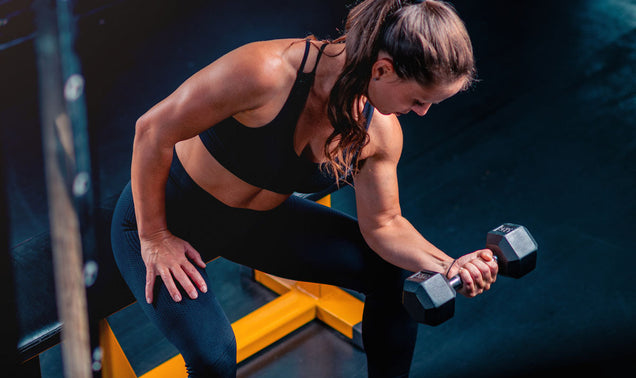We all love the feeling of satisfaction (and relief!) after finishing a tough workout. Your heart’s racing, endorphins are flowing, and you know you’ve put in a good day’s work.
That is until the next day rolls around and you’re sore all over.
To help get rid of the muscle soreness, you go through your standard recovery procedures -- post-workout protein shake, stretching, foam rolling, epsom salt baths, light yoga, etc. But, have you ever thought about “flossing” your muscles to help them recover?
No, we’re not talking about the type of flossing you do for your teeth (though you should keep that up). Muscle flossing is a relatively new recovery technique being explored by athletes and researchers to decrease soreness, improve mobility, and boost performance.
Whether you love cardio or resistance-training routines, muscle flossing just might be checking out.
What is muscle flossing, and can it work for you?
Let’s discuss.
What is Muscle Flossing?
Muscle flossing, also known as “voodoo flossing”, is a type of soft tissue mobilization that uses a rubber band (usually called “voodoo bands”), similar to a resistance band, for compression during active and passive mobilization. The band is wrapped around a muscle or joint similar to the way elastic bandages (e.g. ACE bandages) are applied.
Wrapping the band around the muscle/joint area helps to constrict blood flow to the area. Once the bandage is removed, blood rushes to the area carrying with it fresh oxygen and nutrients
What Are the Benefits of Muscle Flossing?
Muscle flossing is typically used to help decrease the perception of tightness/movement restriction in a particular area, which can improve range of motion and help alleviate muscle soreness.
Physical therapists believe the bands help by:
- Increase the shearing and gliding of layers of muscle fascia and skin
- Improving joint gliding
- Aiding nervous system communication between the brain and muscle group/joint the band is wrapped around
While the muscle flossing is relatively new, preliminary studies find that it may help to reduce exercise-induced muscle soreness (DOMS) and increase range of motion.[1,2] Additional studies in athletes find that ankle flossing, specifically, helped improve single-leg jump performance as well as sprint performance.[3]
Essentially, muscle flossing may help to reduce soreness, aid recovery, improve range of motion/joint mobility, and boost exercise performance.
How to Perform Muscle Flossing
Ready to try muscle flossing?
Great! But first, it’s a good idea to consult a physical therapist or doctor before beginning any new physical activity.
Once you’re ready to try muscle flossing, here are some helpful beginner tips:
- Identify which muscle groups are tight: Typical areas where muscle flossing is done are the ankles, hips, hamstrings or shoulders
- Wrap the area at 50% tension: Stretch the band ~50% of what it’s capable of and 50% overlap as you wrap the desired area. You want the band snug, but not too tight as it can cut off circulation.
- Begin flossing: Move the wrapped muscle/joint through its range of motion 15-20 times (this takes ~60 seconds).
- Remove wraps: With the bands removed, now move the target muscle groups/joint through their normal range of motion and assess if you need to floss again or continue with your warm-up/cool-down routine.
Additional Recovery and Mobility Tips
In addition to muscle flossing, here are some other tips to help you recover more quickly between workouts:
- Consume enough daily protein: hard training breaks down muscle fibers. Your body needs enough protein each day to efficiently recover and build stronger muscles. Aim for 1 gram of protein per pound of body weight and focus on consuming high-quality protein sources, such as lean red meat, poultry, fish, eggs, whey protein, or vegan protein powder.
- Don’t skip warm-ups or cool-downs.
- Take your rest days seriously. Your muscles don’t grow stronger during the workouts, they get broken down. It’s the time spent outside the gym when the body recovers, repairs itself, and rebuilds. As such, make sure you’re taking your rest days as seriously as your training days.
- Get 7-9 hours of sleep each night.
- Consider joint supplements. Healthy joints are the unsung heroes of fitness. In addition to performing proper warm-ups/cool-downs and using good technique when exercising, using a joint support supplement, such as 1UP Joint Health Plus, provides key nutrients that nourish joints and support their overall performance and recovery from the daily wear and tear they experience.






